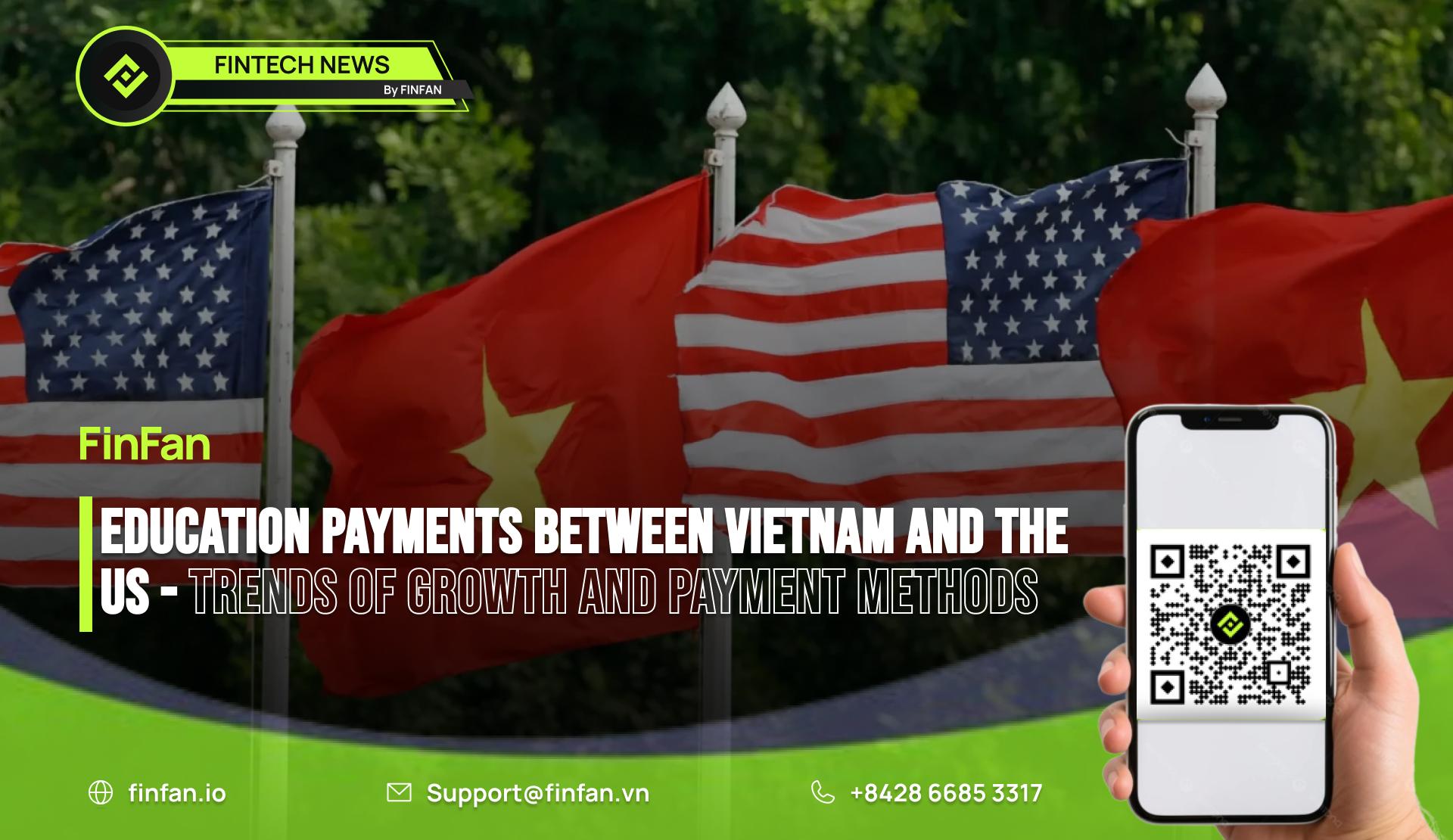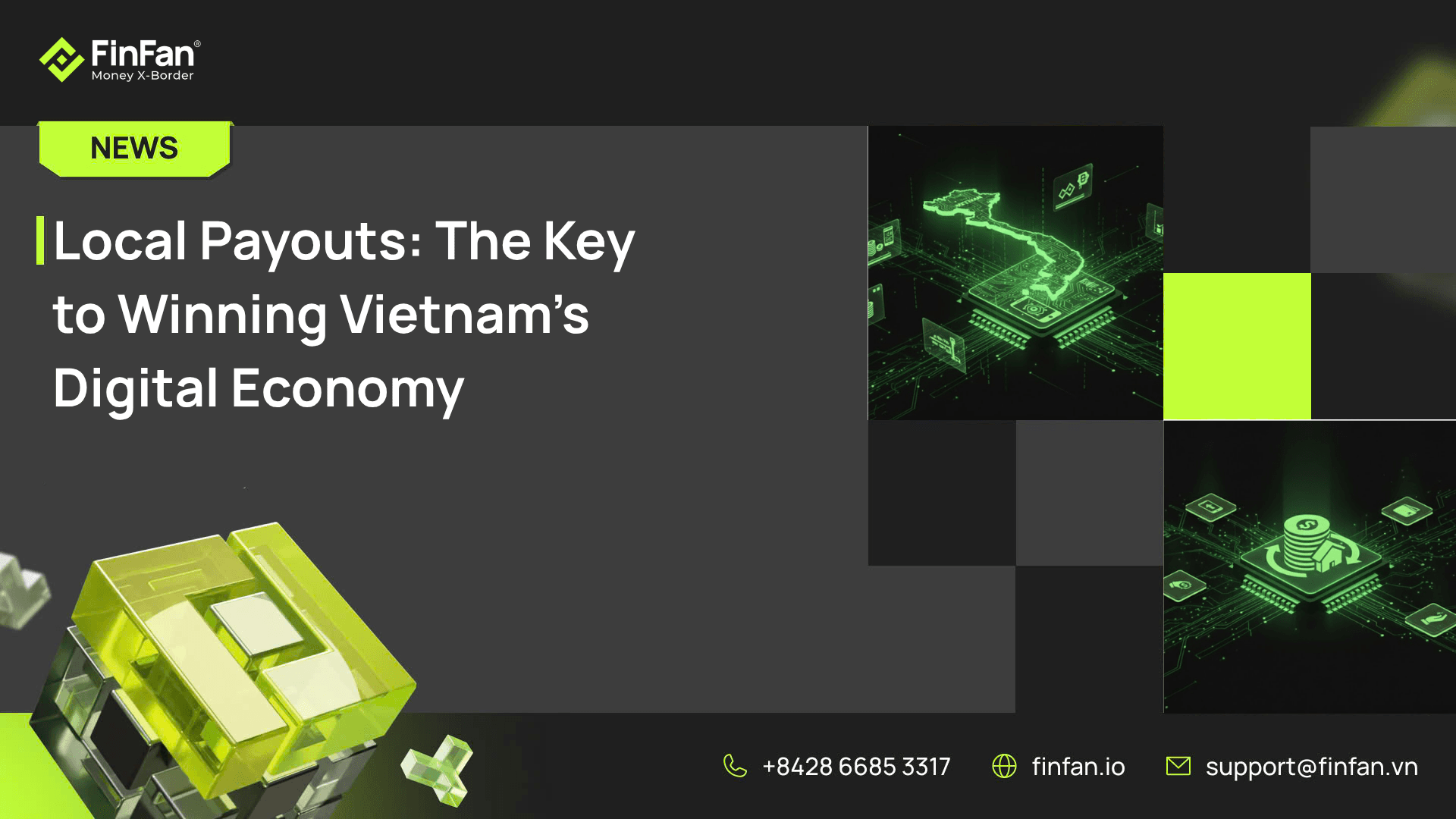Education Payments between Vietnam and the US - Trends of Growth and Payment Methods

The phrase 'American Dream' remains perpetually popular in both developing and developed countries.
It reflects the aspiration of many individuals who wish to set foot in a nation renowned for its wealth of billionaires and movie stars, to fulfill their own dreams and desires.
The same is true in Vietnam, where each year a large number of students receive scholarships or self-fund their studies in the world's leading economy.
So, what are the future trends in education payment between Vietnam and the US, and which payment methods will become increasingly popular for handling educational transactions between these two countries? Let’s explore this topic in the following article with FinFan.
A Brief Look at the Statistics Regarding the Number of Vietnamese Students Studying in the US over the Years.
Please review the data collected by FinFan's market research team from the Institute of International Education (IIE) of the US.
The data clearly shows that the number of Vietnamese students studying in the US has been increasing steadily each year, despite the impacts of the COVID-19 pandemic and recent global economic crises.

Trends of Growth of Vietnamese Students in the US
Some specific majors that attract Vietnamese Students
The following chart illustrates the distribution of majors among Vietnamese students studying in the US. It is evident that, due to its status as a developed economy, “Business Administration” remains the top priority for Vietnamese students in the US.
Additionally, with the continuous growth of the semiconductor industry, highlighted by NVIDIA's market capitalization reaching $3.335 trillion, surpassing Microsoft at $3.317 trillion and Apple at $3.285 trillion, the “Engineering” field also receives significant attention from Vietnamese students. Following this is the field of “Computer Science”.

Distribution by Degree Level of Vietnamese Students in the US
Most Vietnamese students go to the US to pursue undergraduate and master's degrees with the hope of bringing back valuable knowledge about new ways of thinking and technology from the US to apply in their home country, Vietnam.
Furthermore, students from Vietnam are eager to apply what they have learned in real-world situations. They believe that obtaining an undergraduate or master's degree provides them with the necessary knowledge and skills for their professional journey.

Top Universities for Vietnamese Students in the US
Looking at the following chart, we can see that most Vietnamese students studying in the US tend to choose states with significant Vietnamese populations and established Vietnamese communities.
This choice greatly supports Vietnamese students in finding solutions and receiving better assistance from fellow expatriates who share the same language when they are navigating a new and unfamiliar environment.

Trends of Growth of American Students in Vietnam
The previous data provided insights from FinFan’s market research team regarding Vietnamese students in the US.
But what about the reverse trend? Let’s continue with FinFan’s research, exploring data from university sources, educational exchange programs, and surveys or interviews with American students studying in Vietnam, as provided by the Ministry of Education and Training of Vietnam.
Some specific majors that attract American Students
When the FinFan team examined this data, it was surprising to find that a significant number of American students coming to Vietnam for their studies are majoring in “Business Administration”.
This indicates that Vietnam is increasingly establishing its importance in geopolitics and economic potential.
As a result, international students are eager to understand the economic landscape and business environment in Vietnam, aiming to seize future opportunities for collaboration and development.
It is not surprising that the majority of American students coming to Vietnam tend to choose fields such as International Relations, Asian Studies, and Language and Literature for their studies.

Distribution by Degree Level of American Students in Vietnam
Similar to most Vietnamese students in the US, American students in Vietnam also seek to acquire the most practical knowledge possible to apply in their future careers, with the goal of expanding their business ventures into the Asian market.
This is why they often choose to pursue only undergraduate and master's degrees, rather than advancing to doctoral studies.

Most Common Reasons for Studying in Vietnam of American Students
According to surveys and interviews with American students studying in Vietnam, the majority of these students come to Vietnam with the aim of exploring its culture and language. This reflects Vietnam’s growing significance in global economic and political affairs.

Education Payment Methods between Vietnam and the US
American Students in Vietnam
Here are some payment methods that American students use when they have cross-border payments to Vietnam to prepare for the minimum 4 years in Vietnam:
Bank Transfers
Direct transfers from an American bank account to a Vietnamese educational institution.
- Pros: Reliable and straightforward; often used for large amounts.
- Cons: Can be costly due to international transfer fees and exchange rate margins.
Online Payment Platforms
Examples: PayPal, TransferWise (now Wise), Payoneer.
Digital platforms that facilitate payments and currency conversion.
- Pros: Convenient and faster compared to traditional bank transfers; competitive exchange rates.
- Cons: Transaction fees can apply; not all institutions may accept these methods.
Credit/Debit Cards
Payment using international credit or debit cards.
- Pros: Immediate payment; widely accepted.
- Cons: May incur foreign transaction fees; not all institutions accept card payments for tuition.
Remittance Services
Examples: Western Union, MoneyGram (FinFan’s strategy partners).
Services specializing in international money transfers.
- Pros: Can be used for both large and small amounts; accessible in many locations.
- Cons: Fees can be high; exchange rates may not be favorable.
Local Payment Systems
Examples: Vietnam’s local payment gateways like MoMo, and ZaloPay.
Payment methods popular in Vietnam that might be used for student expenses.
- Pros: Convenient for payments within Vietnam.
- Cons: Not commonly used by international students for tuition payments; requires local bank accounts or partnerships.
Educational Institution Payment Portals
Some universities have their own payment systems for handling tuition and fees.
- Pros: Direct payment to the institution; often integrated with institutional financial systems.
- Cons: May require specific payment methods accepted by the institution.
Vietnamese Students in the US
Payment methods Vietnamese students use for education payments
Bank Transfers
Direct transfers from a Vietnamese bank account to a US educational institution.
- Pros: Reliable and straightforward for large payments; often used for tuition and fees.
- Cons: Can involve high international transfer fees and less favorable exchange rates.
Online Payment Platforms
Examples: PayPal, Wise (formerly TransferWise), Payoneer.
Digital platforms that facilitate international payments and currency conversion.
- Pros: Convenient and typically faster than traditional bank transfers; competitive exchange rates.
- Cons: Transaction fees may apply; not all institutions may accept these platforms.
Credit/Debit Cards
Payments using international credit or debit cards.
- Pros: Immediate payment; widely accepted by many institutions.
- Cons: Foreign transaction fees can apply; some institutions might not accept card payments for tuition.
Remittance Services
Examples: Western Union, MoneyGram.
Services specializing in international money transfers.
- Pros: Can be used for both large and small amounts; accessible globally.
- Cons: High fees and potentially less favorable exchange rates.
Educational Institution Payment Portals
Payment systems provided directly by educational institutions.
- Pros: Direct and often integrated with the institution’s financial systems; secure.
- Cons: May require specific payment methods or have limitations based on the institution's policies.
Local Payment Systems in Vietnam
Examples: Vietnam’s local payment gateways like MoMo, ZaloPay (less common for international payments).
Domestic payment systems that might be used for other expenses but are less likely used for international tuition payments.
- Pros: Convenient for local transactions.
- Cons: Generally not used for international education payments; may require conversion and additional steps.
Conclusion Regarding Education Payments between Vietnam and the US
- Growth Trends:
The educational exchange between Vietnam and the US is marked by a steady increase in student mobility. Vietnamese students are increasingly pursuing higher education in the US, driven by a desire for high-quality education and exposure to advanced technologies. American students, in turn, are showing growing interest in studying in Vietnam to experience its culture and capitalize on its economic potential.
- Payment Methods:
Both Vietnamese and American students utilize a mix of traditional and digital payment methods to manage their education expenses.
While bank transfers and educational institution portals remain fundamental, online payment platforms are becoming more prevalent due to their convenience and competitive rates.
The choice of payment method often reflects the need for secure, efficient, and cost-effective solutions for handling international education payments.
These trends and payment preferences illustrate the dynamic nature of educational exchanges and financial transactions between Vietnam and the US, highlighting the ongoing evolution of international education and financial integration.
This article was curated and authored by FinFan's market research and development team, alongside our marketing department.
About FinFan
FinFan is a cross-border embedded financial services company that focuses on mass disbursement, fund collection, card processing, IBAN, and digital APMs solutions, which can provide valuable input and integration on and for the same.
FinFan is already integrated with almost the world's well-known MTOs, PSPs, switch, and core fintech platforms such as Money Gram, Thunes, Qiwi, Remitly, World Remit, Bancore, PaySend, Terrapay, Ria Money Transfer (Euronet), Dlocal, Ripple, TripleA, FoMo Pay, Wings, etc.
For more information, please get in touch with us through:
🌐https://finfan.io
📞(+84) 2866 85 3317
✉ support@finfan.vn
LinkedIn: [FinFan](https://www.linkedin.com/company/finfanio" \t "%5Fblank)





